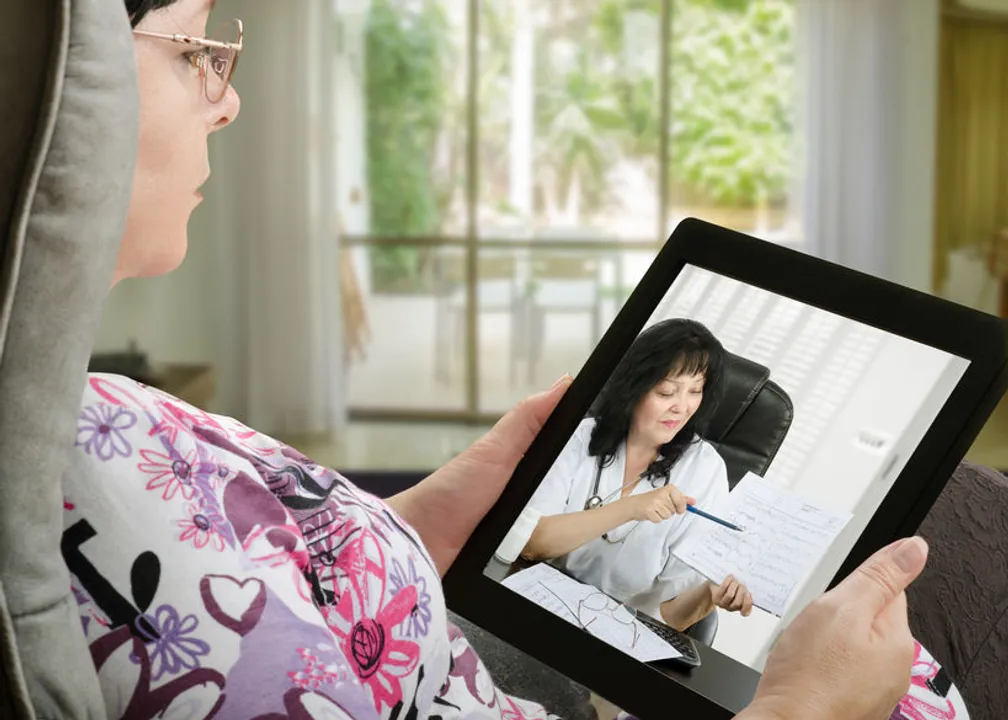Limitations and Pitfalls of Telemedicine
 Telemedicine adoption is increasing at a rapid clip. Enter a global pandemic, and the number of virtual services has risen exponentially and forecasted to deliver 20% of total visits in 2020.
Telemedicine adoption is increasing at a rapid clip. Enter a global pandemic, and the number of virtual services has risen exponentially and forecasted to deliver 20% of total visits in 2020.
With progress comes growing pains. For many, you will provide a patient's first taste of virtual healthcare. Some will be amazed and offer heartfelt gratitude, while others will hide behind the keyboard, showing an aggressive brand of criticism when the visit doesn't meet their expectations.
The following are a few potential pitfalls of telemedicine. Advanced understanding and planning can remove some of the headaches and pains on both sides of the phone or video chat.
Asynchronous communication gaps
Individual states allow asynchronous communication to complete online visits. The most common way is through chat on a HIPPA compliant platform.
Patients may perceive the physician's message or question as coming through live and are often surprised by the fact the communication may not be a real-time conversation. The invention of chatbots and automated responses from retailers and savvy eCommerce providers drives an expectation of the same across healthcare.
It's not uncommon to see a string of patient messages:
"Hello?"
"I'm here"
"What is the problem? Why don't you respond now?"
"Why do I have to wait for a doctor?"
Commodity vs. Service Mentality
"I want to order" x, y, or z. Comments as such are an everyday occurrence as patients enter the telemedicine world for the first time. Education is crucial to bridge the gap and help the masses understand that there is no menu, waiter, or checkout clerk involved.
Online visits are held to the same standard as in-person and medical decision-making, and patient safety is a top priority. Explain that you genuinely want to help the patient, but a phone call's constraints do not allow safe prescribing in this situation and that their primary care doctor or an in-person evaluation is required.
Standard of Care still applies
Patients ask or demand a drug that "my regular doctor already gives me" but fail to understand that your name on the new prescription transfers the liability.
Telemedicine companies set their standards and develop their protocols/guidelines that may conflict with patients' local doctors' practice patterns. Take a moment to explain that your practice style does not accommodate that type of prescription duration.
A solid understanding of what the rules are for a particular telemedicine platform is critical. As in a regular clinic or hospital, telemedicine groups deploy QA methods to ensure quality and safety.
Here are a few metrics commonly tracked:
- Patient complaints
- Antibiotic utilization for specific diagnosis
- Referral to specialist
- Referral to urgent care or ER
- Length of average patient engagement
- Possible recording of verbal or video appointments for QA
- Nontraditional hours vs. 8-5 type visit
Scope of Care in Telemedicine
Telemedicine imposes limits on the scope of practice for many reasons, including patient safety. Years of numerous in-person examinations and a long-standing doctor-patient relationship provides a comprehensive understanding of complex patients.
The patient or family member setting up an appointment has a level of expectation the health concern will be solved during the call or video chat. A ten-minute phone call cannot safely evaluate and treat dyspnea for a 78-year-old patient with a history of DM, CAD, HTN, CHF, and leukemia in remission.
Start the telemedicine encounter by asking if this is the patient’s first telemedicine experience. A moment of explanation of the process, limitations, and expected outcome will go a long way for everyone involved.
Although smart devices and wearable technology offer the promise of increased caring for complex illnesses, we are not fully there yet.
Open access
Some companies stipulate episodic care while others give the patient open access to contact the provider whenever and as often as they desire. Keep this in mind when choosing which company to work for, as you may have the pleasure of answering hundreds of messages from a single patient over the next nine months for a small one-time consultation fee (currently averaging 10-25$).
A different frame of reference is required as one wades into the deep end of telemedicine delivery. Please be a patient, pause, and understand that for many patients, this is uncharted territory. Use your skills as a communicator, teacher, and healer to solve the issue at hand.
The landscape of telemedicine is vast. New companies sprout often, and the structure varies widely. The above comments are based on the author's decade of providing startup advice to new companies and delivering consults on various telemedicine platforms for companies spread across the country.
That said, not all physician opportunities are equal. Whether your core need leans towards certainty vs. variety will determine the best fit. Due diligence is required, but the work is rewarding, and helping a patient access care in a new way is joyful.
I write this with hope that you will try telemedicine, as it fills a vital gap in our current care delivery system. Policies and procedures vary widely, as do the expectations of the parent company and patient alike. Embrace the freedom of practice telemedicine can offer.
Related Posts
